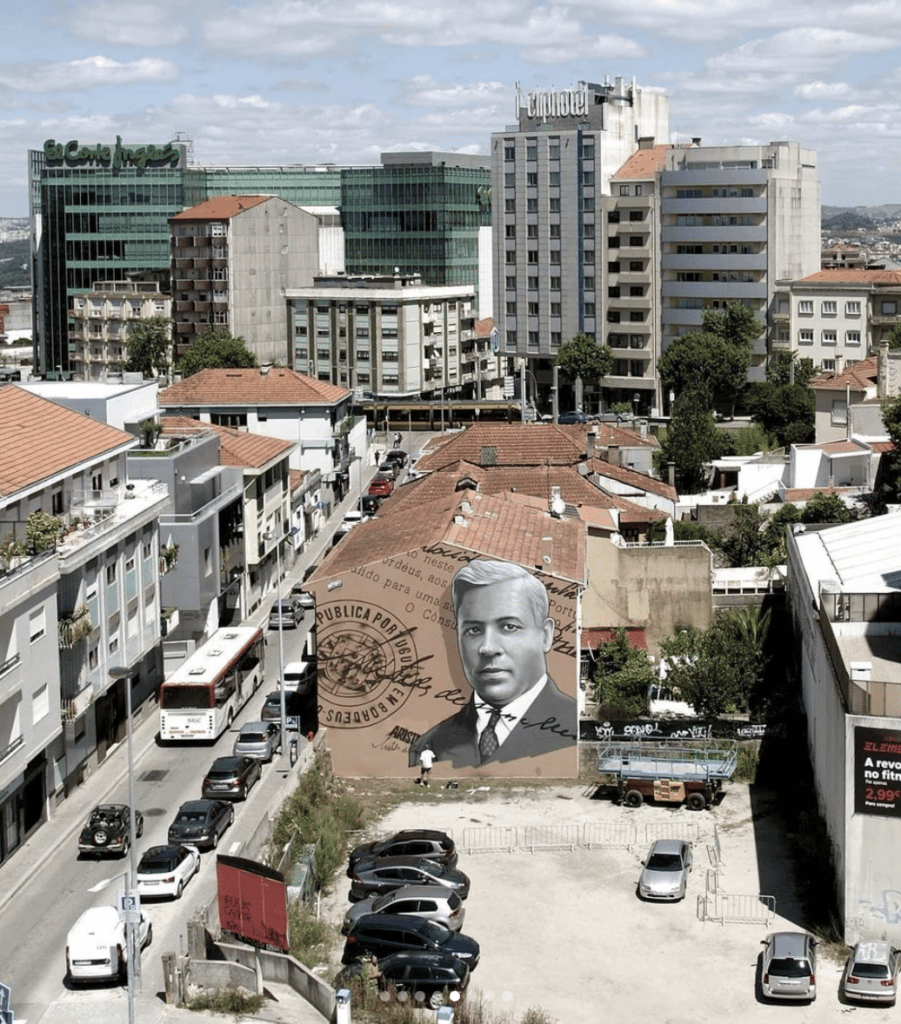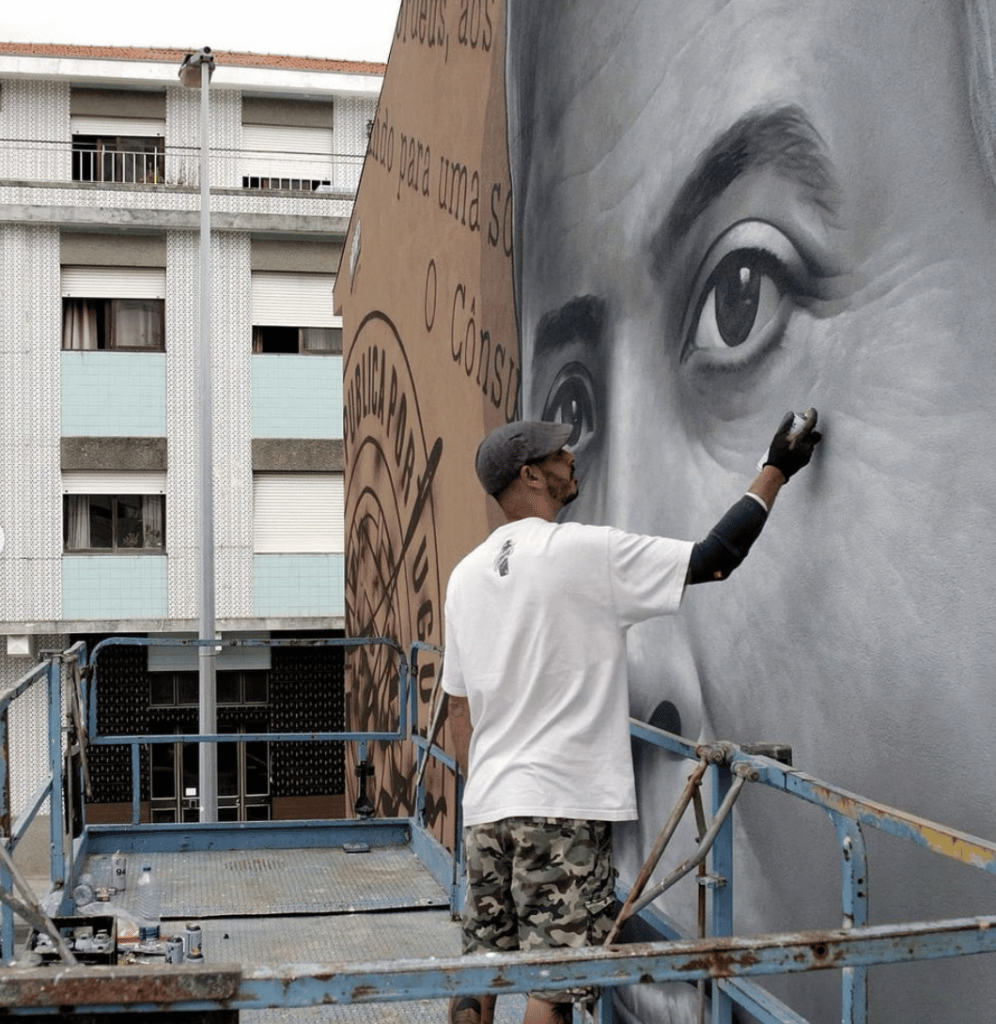Once in a while a cause can’t be ignored — Artists 4 Israel is one of them. For multiple reasons. First, you literally can’t ignore it — the organization is creating huge murals all over the world. And second, the stories behind the murals are so powerful that they touch everyone’s hearts, both Jews and non-Jews. Artists 4 Israel is bringing everyone together to prevent the spread of anti-Semitism in an impactful new way that reaches multiple generations all around the world.
Lost Tribe sat down with Craig Dershowitz, the Chief Executive Officer of Artists 4 Israel, and Jeremy Goldscheider, a producer and director working on a documentary about Righteous, Artist 4 Israel’s mural project, to talk art, going viral, and how to inspire the younger generations.
What is Artists 4 Israel?
Craig: It prevents the spread of anti-Semitic and anti-Israel bigotry and helps heal communities impacted by hate. The goal of our work is to provide real humanitarian type aid but also sharing a realistic and positive narrative people in Israel. For the longest time, the last 13 years, we’ve been disruptors. We’ve been looking at urban and contemporary arts. The pop mindset. Teenagers.
As anti-Semitism continued to grow, we were charged with doing that again. We are a unique voice in how to educate about the Holocaust and prevent the growth of anti-Semitism, particularly in the young liberal and progressive community that other organizations have difficulty reaching.
What is the Righteous mural project?
Craig: Artists 4 Israel is of the mindset that accusations, shame and blame, and saying negative things about other people are not really a way to make friends and influence people. The idea is that Artists 4 Israel tries to look at where we can go and grow from strength to strength. If you look at the Holocaust, one of the biggest examples of anti-Semitism being manifested, you realize that there was so much horror, but there were those great heroes that took courageous heroes and protected Jews.
Our goal with this project is to honor those heroes and model their heroism as a way to prevent anti-Semitism. We want to say to people in their home countries around the world, “Look at what incredible brave steps your fellow countrymen took. As you see anti-Semitism continue, you also can become heroes and stand up for the Jewish people.”
Murals are big and unavoidable.
Jeremy Goldscheider
Jeremy: Holocaust education is on a decline. That’s because the way we have chosen to educate is in books, textbooks, and museums. Let’s be honest, people don’t really engage in that way, especially these days. We are taking that Holocaust education out of the dusty textbooks and dark museums and putting it into the streets where everyday people are forced to interact with it and face what happens — and make a choice about what they will do as anti-Semitism continues.
The goal of the project is to honor and to educate, to honor the righteous in their own cities. And inspire local people that live and see that mural. And the idea of working with high-end mural artists to utilize their followers and social media to bring the message to people who don’t have any access to the Holocaust. Maybe they had a couple hours in high school career they heard about it… But this is a new entry point to talk about the Holocaust for young people. We’re tapping into a young audience but a new, young audience for this topic.
We’re building on that by creating a short documentary for each mural. There’s even more content behind the wall. These films will reach an even broader audience to share with them the entire journey, the entire project, all the rescuers, the artists…
We’re bringing the museum to the street.
We’re dusting off the archives and representing these important stories.
Jeremy Goldscheider
So who are the people featured in the murals?
Jeremy: There are 27,000+ righteous among the nation recipients. Righteous rescuers. All amazing stories, each one of them. We’re trying to find handfuls in different parts of the world and cover as many as possible. There’s no end goal for the project specifically. We want to keep making the murals and putting it out there.
Craig: Videos and stories have been told before — but never told like this. They’ve never been told with graffiti artists, young people on the streets talking and interacting. They’ve never been told from our perspective. It’s fitting — combine so many young and energetic elements that will really have people take notice of it and make it heard.
So the murals will go up in the cities where the person was from. Are there any planned for Southern California?
Craig: Irene Opdyke was a nurse that hid 12 Jews (one unborn) in a Nazi commander’s house, in his basement. Right under his nose. When she was discovered, he said to her, “I could kill you all or you could become my mistress.” She became his mistress for years. I want to be really blunt about what we’re saying here. She was basically r—ed for a year to save these lives. It’s horrific and heroic at the same time. This is what we’re dealing with. These are the people we’re trying to honor. She deserves as much honor as we could possibly possibly give to her.
/Irene-Gut-Opdyke-d321a5f1ba71414fa40bda2b7ed2cabc.jpg)
Jeremy: It’s hard to keep these stories alive. This is a way of doing it. We’re dusting off the archives and representing these important stories.
Craig: There’s so many powerful stories. Roddie Edmonds was the highest ranking American POW in this big POW camp. He was in charge of American POWs. They went up to him and told him to point up all the Jews or line them up. He said no. They put a gun to his head and pulled the safety back. They said, “Tell us or we’ll shoot you.”
According to testimony, Roddie said: “You can have someone’s rank, serial number. Shoot me now, you’ll be tried for war crimes.” They all stood up and said they were Jewish. They would be forced to kill all American soldiers. All the Jewish soldiers survived, saving 200 American Jewish lives.
Are any of these murals already up?
Craig: Two are complete, one in Portugal and one in Greece. There are also a handful in the works. Jeremy’s working on putting together metrics for Portugal mural. There are too many places it popped up to even track it all down. The response has been outrageous. Before it was even complete, someone took a picture and posted it on an ILovePorto page on FB and within 24 hours it has like 400 shares, someone else had shared it… That was when it was just an outline. It’s in the 100,000s now.
“We’re rescuing the Jews better!” How often do you hear that? Not much!
Craig Dershowitz

In Greece, we had a traditional media component. It was on literally every major news station and in every newspaper. That was proof positive of our intentions. One news channel did a three to four minute section of the nightly news where they went in and discussed the Holocaust and what it was. Then they discussed this person and all that he did. We got the Holocaust on the nightly news and showed how great these heroes were, celebrated them as examples of behavior.
That’s all happening bc people are forced to see this mural and reacting to it.
Jeremy: It’s spread through online communities that are into street art culture. This is a community that’s very loyal to this style of artwork. They want to see everything, talk about everything. It has spread through the street art world. It’s gone viral. We keep hearing small things about it. Like a tour bus in Portugal, a double decker, they stop at the mural now. Everyone on the tour is taking pictures of it.
Craig: It’s beyond what we could have imaged.
Even in Greece, we now have the city of Athens asking us to do murals about heroes from their city. I love that! I love that people are like, “We were stronger allies to the Jewish people!” How often do you hear that? Not much! “We’re rescuing the Jews better!”

How are you finding the artists?
Craig: We work with thousands of artists across 32 counties. There’s a terrific community of artists that want to do this artist. They want to step up and show their support for the Jewish people as well. We have a full roster of artist and it’s only growing.
Jeremy: These artists are not Jewish for the most part, which we find exciting as well. It’s an exciting aspect of the project. We’re not preaching to the choir.
How can Jewish teens get involved in this project?
Jeremy: Fundraising! This is the youth speaking up and doing things they want done. We can’t rely solely on older generation the next gen’s way of doing things. Fundraising will empower the teen community. We want to empower people that are inspired and can help make this happen. As the younger generation, we can own this project.
Right now, we’re making murals and fundraising at the same time. It’s for future murals, the film aspects, and the social media, which we’d like to start doing as well. It’d give it an even bigger reach.
We’re open to hearing from anybody who is connected to a story. To a rescuer. We’re open to suggestions of who we are going to honor. We’re letting the public be involved in decision-making. There are so many great stories.
Learn more about the Righteous mural project by Artists 4 Israel here. And stay tuned for updates on how Lost Tribe and its community plan to get involved with Artists 4 Israel in the near future!
